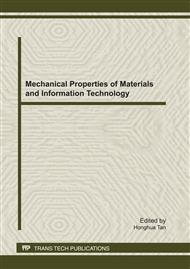p.397
p.402
p.409
p.416
p.421
p.429
p.436
p.439
p.444
Predictive S Control of AUV Based on Model of Support Vector Machine
Abstract:
Because of nonlinear dynamic performances and uncertain working environment, precise motion control of Automatic Underwater Vehicle (AUV) has always been a problem. For the time lag and nonlinearity of AUV, a new method called Predictive S Control (PSC) based on model of Support Vector Machine (SVM) is presented. Firstly, in establishing the model of SVM, the fine property of approaching to the nonlinear model is utilized to solve the predictive problem. Then, the control parameters of S controller are optimized by constructing the error function. At last the motion control of AUV is realized. It has been proved that this method is feasible and effective. Using this method, a good control result is obtained in the simulation.
Info:
Periodical:
Pages:
421-428
Citation:
Online since:
September 2011
Authors:
Price:
Сopyright:
© 2012 Trans Tech Publications Ltd. All Rights Reserved
Share:
Citation:


